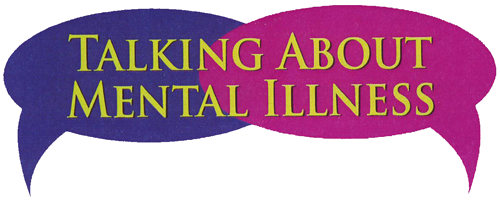
Report by Diane Kratt with help from Ethan
The NAMI National Convention is full of excitement, promise and hope. Thousands of participants are here to learn more about making a difference, either in their own lives or in the lives of others in their community. There are a growing number of young people getting involved with NAMI and their presence is noticeable this year. I have met people of all ages from all over the United States who play various roles in the mental health arena. I personally have three roles involving mental health; educator, affiliate president, and mother.
This year’s convention offered a young adult track which especially interested me and was a large deciding factor in whether or not I would attend. As an instructor in the College of Education at Florida Gulf Coast University, the information offered in this track is useful in training to be teachers and for many of the college students themselves. I collected information on ADHD, young adult programs, and school/work related rights. The NAMI on Campus movement is really exciting and gaining much strength in the current circumstances around the country. I thought the presentation given was very well done and Stacy Hollingsworth, founder of NAMI Rutgers, is an inspiration. She has a very promising career ahead of her with NAMI or otherwise. I would be honored to be the faculty advisor if/when we can get a club started on our campus.
In my role as affiliate president, I feel reenergized and hopeful about finding opportunities for younger people to connect with us and get more involved. I see the need and the benefits to working with young adults and know that it will greatly strengthen our organization. Meeting so many people this weekend and hearing such stories of hope and recovery ground me in moving our affiliate forward to help improve people’s lives and educate the general public.
Because I am a mother of a 19 year old with mental health concerns, this focus on young adults is crucial. Having an opportunity for him to learn from noteworthy professionals and peers at a conference like this is incredible. The self-determination and advocacy skills alone make it a worthwhile trip for the both of us. I am sure NAMI will continue to offer this track at future conventions and most likely will look for ways to make improvements. According to my son, the presentations would be more engaging if the presentation focused on talking with the young adults more than talking about them. He felt that the content and language of the sessions he attended were more professionally oriented rather than practical for his life.
Something that I was reminded of is that we are currently in a data driven world. I know it is true in the educational field but I didn’t realize how wide spread it was. The convention presentations are dominated by numbers, charts, graphs, research, and a variety of data. Being in higher ed, I know the value of quantitative data and evidence-based practices but personally speaking, I also know the value of human experiences and explanations. Numbers don’t tell the whole story, only part of the story. I grow concerned about decisions being made in a scientific management type mode without room for the humanistic side or qualitative data. Hopefully, there is a good balance of both kinds of data being used by those who have the decision making power and who are leaders in the mental health field.

Diane Kratt
Today, my son, Ethan, and I had the opportunity to share our poster presentation on his current treatment which is yielding miraculous results. He is under the care of Dr. Demitri Papolos who is currently completing an FDA approved study using nasal Ketamine as a treatment for children who have a particular phenotype of bipolar disorder. The main characteristic of this phenotype is an elevated body temperature and problems sleeping/waking. Keeping his body temperature cool is a key factor in him feeling well. Since he began using Ketamine in October 2012 everything has improved significantly. The typical symptoms of irritability, aggression, impulsiveness, anxiety, etc… have all diminished or completely gone away. He is no longer on any of the other medications and is doing well in all areas of life. To learn more about this phenotype and/or Ketamine treatment, visit www.bipolarchild.com and www.jbrf.org.
Lots of people visited our poster and many of them could identify with the temperature problems. Most everyone who we spoke with was fascinated, as we have been too. Ethan did a great job explaining all of it to our visitors and I am very proud of him for being willing to share his experience in hope of it helping others.
All in all, the NAMI convention is a success. All of the topics and conversations are much needed as well as the variety of people who are involved. Bringing the younger generation into NAMI helps to ensure the future of NAMI and with their perspective we will get new ideas for the present. I am proud to be a part of an organization advocating for mental health at a national level. This is an opportune time for us to get our message out and increase our work in our communities. We have a lot to do but together we can make a difference.
Tomorrow — Our bloggers comment on Robert Whitaker’s presentation.




Great convention coverage. Thanks.
I now want to learn more about nasal ketamine. Fascinating. Your son’s feedback on engaging young adults ‘where they live’ is on target. What great opportunity for the two of you.
Terri